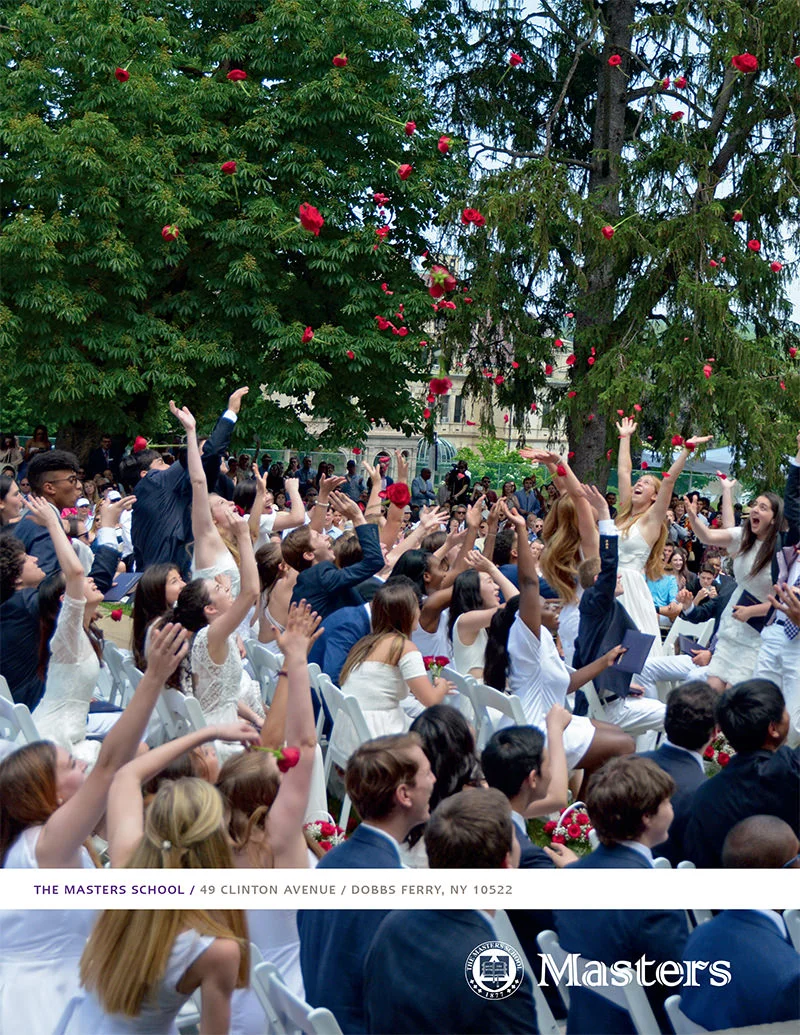Make the Most of Your School Magazine
melinda wissmann
In this age of fleeting tweets—in fact, more than at any recent time— alumni, parents, and donors love getting your magazine. They’ve told us exactly that. So it’s worth the effort to make the most of this unique publication. In projects for four different partner schools, Kelsh Wilson shows how.
The Masters School in Dobbs Ferry, NY, the Canterbury School in New Milford, CT, The Independence School in Newark, DE, and Penn Engineering, part of the University of Pennsylvania, are four very different institutions, each publishing different school magazines. But all have partnered with Kelsh Wilson in order to take the opportunity—at several key points each year— to put their best foot forward.
Kelsh Wilson has worked with each school to develop new design approaches for their magazines and to produce issues of their periodicals that reflect this design consistently over time. In certain instances, we’ve also helped with photography and with writing of high-profile feature stories.
The look and feel of Penn Engineering, The Masters School’s Bulletin, Indy’s Spirit, and Pallium (the Canterbury’s School’s periodical) differ in ways that reflect the school’s individual identities. All, however, reflect several key approaches.
1) Sophistication in Design
We’ve all seen periodicals from educational institutions that actually feel more like newsletters—from clunky typography to a suffocating absence of white space. Readers often tell schools they love these magazines, because they do love the news they contain. In reality though, publications like these damage the image of the schools they represent.
The design of your magazine is a chance to project the quality and professionalism of your institution through the quality and professionalism of your design choices. This is about more than pure aesthetics. In a world where every reader sees hundreds of examples of smart design every day, it’s about putting your school in the right company. It’s positioning yourself as the kind of organization that inspires pride, loyalty, respect, and support.
2) Practicality in Imagery
From the photos that make National Geographic the wonder it is to the signature cover illustrations of The New Yorker, it’s no secret that an enormous part of a magazine’s impact comes from its visual content. It’s also no secret that most schools don’t have the kind of budgets these national titles do to commission photographers and illustrators.
The answer is to work practically with the images that are possible given your budget. When you do spend money, focus it on the most important visuals in your publication: the cover photo and the images to support your feature stories. Conversely, when you have to make do with less-than-inspiring existing shots, run them small. When you have the chance, shape your story list around the visuals (i.e., don’t make the cover story about your gala if you know it’s going to mean a dozen paralyzing grin-and-grabs).
When you do have the chance to hire a photographer, make the most of your investment. Schedule efficiently—as Penn Engineering always does in working with Kelsh Wilson’s photographers. And, grab everything you can—not just the big planned shots but student faces, architectural details, and found moments—little gems you know you’ll use to brighten up otherwise dull pages.
3) Strategy in Content
Too many magazine staffs exercise too little imagination when it comes to developing their story lists. Yes, there will always be events to cover and sports to recap. There will always be a place for a snowy campus scene. The questions, however, that too often go unasked are: What is the content we need to feature to build our brand? And How can we show our stakeholders our mission in action?
These are the kind of questions that lead your team to develop meaningful, original content—pieces that generate real reader feedback.
Customize Your Collaborations
If the challenge of making your magazine into the publication you want it to be seems daunting, think of all the ways you can get help. Yes, you can hire a creative agency to take over the project, or you just can get some focused strategic advice on content planning.
Yes, you can partner with a design professional to layout every issue, or just to do a one-time facelift and create a set of templates that your in-house team can use going forward.
Yes, you can find a top-notch photographer to fill every issue with beauty, or you can get that same great photographer to give you one day of his best work twice a year and really make the most if it.
Be smart. Be practical. Be the magazine people admire!












































































































